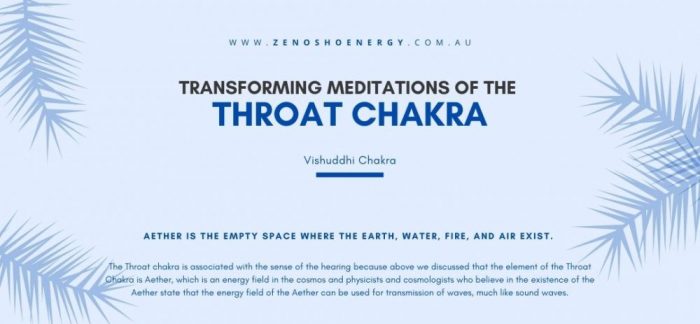ॐ (OM) : The sound of silence
“The word OM which is also the sound of silence is not written alphabetically in any language of the East because it is not part of the languag=e. It is written as a symbol; hence the same symbol is used in Sanskrit, in Pali, in Prakrit, in Tibetan – everywhere the same symbol, because all the mystics of all the ages have reached to the same experience, that it is not part of our mundane world; hence it should not be written in letters. It should have its own symbol which is beyond language.” – Osho
ॐ (OM) is made up of the 3 sounds – A, U, and M.
- “A” represents the physical body,
- “U” represents the mental body and,
- “M” represents the spiritual body.
These three sounds are the primary sounds. A baby before learning any language is capable of producing only these three sounds. A speechless person (verbally handicapped) can produce no more than these 3 sounds. The consonant sounds have vowel sounds and vowel sounds are made up of the three basic sounds A, U, M that is OM. Just like all colors are formed from the 3 primary colors (Red, Green, and Blue), all the sounds are formed from the 3 primary sounds (A, U, and M)
The Latin prefix “OMNIS” used in the English language is also believed to have originated from the root of OM. The meanings of all the words with the prefix “OMIS” seems to draw a rough picture of OM.
- OM is Omnificent, creating everything
- OM is Omnivorous, destroying everything
- OM is Omnipotent, having unlimited power
- OM is Omnipresent, present everywhere
- OM is Omnidirectional, in all directional
- OM is Omniscient, knowing everything
- OM is Omniscience, state of discovering everything
- OM is Omnifarious, with everything
- OM is Omnipatient, capable of enduring everything
The utterance of ॐ (OM) can be
- Fast, many cycles per minute (Aum, Aum, Aum, and Aum)
- Slow, with a sustained “M” sound (Aummmm, Aummmm,) or
- Even slower, with a longer sustained “M” sound (Aummmmmmmm)
The utterance of ॐ (OM) creates vibrations that flow from the Belly (Navel) to the Brain which harmonizes our body in all the 3 levels; the body, the mind and, the consciousness.
Let’s talk about the 1st sound “A” which represents the physical body. In the level of the body, the vibration of the ॐ (OM) stimulates the Vagal Nerve, which is the longest nerve of the Autonomic Nervous System which begins from the Brain Stem and goes down through, the Nose, the Throat, and the Chest up to the Abdomen. Researchers have proven that the vibration improves the condition of Sinuses, Epilepsy, strengthens Voice-box Muscles, regulates the Heart Rate, and keeps the Gastro-intestinal tract in a healthy condition. Additionally, the utterance results in benefits like;
- Increment in blood circulation.
- Deep tissue massage
- Muscles Relaxation and many more.
Let’s talk about the 2nd sound “U” now which represents the Mental Body. In the level of the mind, the vibration of the sound stimulates the Pineal Gland, a pea-shaped gland in the brain which is called the 3rd Eye Center in Tantric Science. One of the functions of the Pineal Gland is to regulate the Body’s Internal Clock (Circadian Rhythms). This clock makes us aware of time to wake up and time to sleep. So, it can be said that the utterance of the sound, ॐ (OM) cultivates alertness in us.
Finally, in the level of consciousness, a mindful utterance of the sound stimulates the Theta Brain Waves and Delta Brain Waves. Theta Brain waves vibrate between 3 to 8 Hz which promote; memory, intuition, and insights, and the Delta Brain Waves vibrate between 1 to 3 Hz which promote; internal healing, and mind-body restoration process.
Now let’s talk about the 3rd sound “M” which represents the Spiritual Body. According to the Nada Bindu Upanishad ( Sound Point Upanishad ), the very 1st phenomenon in the cosmos was a sound vibration of OM but OM is not a sound vibration in a true sense because to create a sound vibration, collision of two or more objects are needed. In Physics, sound is a pressure wave that is created by a vibrating object which causes movement in the air particles. OM is called Aanahat Nad which means unstruck sound created by the vibration of Nothingness. This means that in the very beginning, there existed nothing to strike against to produce a sound. All other sounds are Aahat Nad which means sounds that are produced by some kind of collision.
“In the beginning was the Word, and the Word was with God, and the Word was God.”– New Testament – John’s Bible, JOHN 1:1
“In the beginning, God created the heavens and the earth.” -Old Testament Bible, Genesis 1:1
Theologists state that the line from the New Testament reflects the line from the Old Testament and the “Word” indicates the phenomenon of the “unstuck sound” mentioned in the Upanishad.
However, OM is not a word too because all the words have meanings. OM does not have any meaning. OM is more like a symbol that denotes what is beyond mind and interpretation. That is why in Sanskrit, OM is called Arthatit which means beyond meaning.
The ultimate OM is not what we can utter because the OM that we utter is also an Aahat Nad, produced by the friction of the Vocal Cord. That is why OM is also called Ajapa Nad, the sound that cannot be uttered or chanted.
So, why do meditation practitioners repeat OM? The repetitive utterance of OM is only for the adjustment of the body and the mind to invoke the ultimate OM to manifest and reverberate from within our being.
All the major religions in the East like; Buddhism, Hinduism, Jainism, and others have a different description of the ultimate Truths and in many instances contradict each other but OM is the only phenomenon that all of them agree upon. AMEN used in Islam and Christianity is also the cultural modification of OM. All the people who have attained the inner silence have heard the same sound, OM with subtle variation because of their different levels of consciousness. Nanak once said, “Ek Omkar Sat Nam” which means the Truth has one name, that is Omkar. The truth spoken of by all the religions is the same, Omkar. Omkar is another name for Om. That is why OM is called the Universal sound too.
Read about:
Types of meditation for Beginners
 You don't have access to this posts. Please login.
You don't have access to this posts. Please login.











